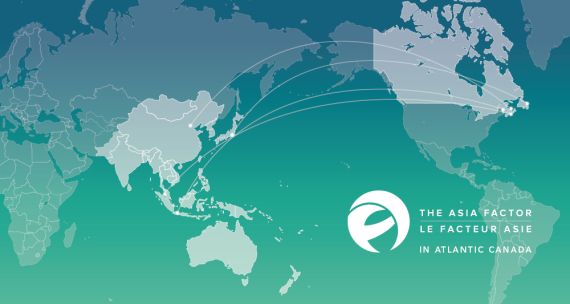In the coming decades Atlantic Canada’s business and trade strategies will be under considerable pressure to accommodate the global political and economic shift from the West to the East.
By 2030, Asia will account for 53 per cent of the world’s population, 50 per cent of the world’s GDP, 64 per cent of the global middle class, and over 40 per cent of global middle-class consumption. And the pendulum is already swinging.
Atlantic Canada will not be immune to this rebalancing. And with Asia’s rising prominence in a multipolar world it will no longer be able to rely solely on its deep-rooted historical trade ties with Europe and the United States, its traditional trading partners.
The growing challenges and opportunities for Atlantic Canada in the Asia Pacific are the subject of The Asia Factor in Atlantic Canada, a new Asia Pacific Foundation of Canada project featuring a series of reports, and the first comprehensive study of the current impact and future opportunities that Asia presents to the Atlantic Canadian economy. It will be unveiled today in Halifax at The Asia Factor in Atlantic Canada Roundtable with Atlantic Canada business leaders and other stakeholders.
It is crucial that Atlantic Canada follows and understands the “Asian shift,” and bases government and business planning, policies, and initiatives on this new global reality. Not at the exclusion of traditional trade relations, but certainly with the aim of diversifying overseas markets and integrating Asian trade into Atlantic Canadian business and transportation networks for the benefit of all Atlantic Canadians, and the country as a whole.
By circumstance and necessity, Atlantic Canada has begun to address these opportunities. Prior to the 2008 financial crisis, the region exported less than five per cent of its products to Asia. Between 2007 and 2009, while Atlantic Canada’s exports to the U.S. and Europe both declined by more than 20 per cent, exports to Asia grew by 60 per cent and, in 2009, at a value of C$2.1 billion, surpassed the value of exports to Europe.
It remains imperative in our volatile global economy, however, that Atlantic Canada continues to consider Asia — the region’s top source of immigrants and third largest source of tourists — a priority, go-to market for its products and services.
The Asia Factor in Atlantic Canada project, which features interviews with some 30 regional businesses engaged with Asia, suggests that a consideration of the following actions may help ensure the future prosperity of Atlantic Canada in the context of a rising and dynamic Asia:
- Further develop Atlantic Canada’s gateways and corridors, and transform Canada into a gateway economy connecting Asia to the United States and Latin America.
- Support a single Canadian brand as a way to co-ordinate trade promotion activities across sectors.
- Help businesses better leverage the Trade Commissioner Service in Asia.
- Work with business associations in key sectors to improve use of government visits and trade missions for promoting Atlantic businesses.
- Convene workshops in Atlantic Canada that bring together successful companies to mentor new companies interested in and capable of engaging Asian markets.
- Actively support the development in the Atlantic Provinces of a better knowledge and understanding of Asia, also known as “Asia competency.”
- Support a small and medium enterprise travel fund to sustain multiple visits to Asia.
- Set up Asia-entry marketing competitions that pair groups of Asia-competent students with local businesses.
- Support proactive measures for encouraging a broader understanding of the Trans-Pacific Partnership for Atlantic Canada.
Atlantic Canada’s international partners — including the U.S. and countries in Western Europe — are already successfully investing in the emerging and established economies of the Asia Pacific. The success of Atlantic Canada’s future engagement with this region will require co-ordinated and strategic collaboration at home in Canada, and a strong strategy of diversification and relationship-building across the Asia Pacific, home to some 50 established and emerging economies and over half of the world’s population.



